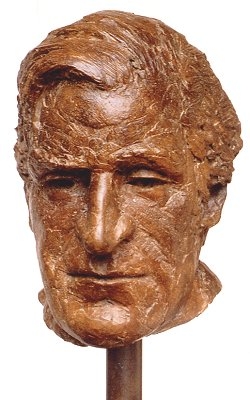featured item

quality pair of antique edwardian postal scales and weights Read more
portrait of benoit coquelin (1841-1909)
- View other items in:
- antiques interior design modern and vintage
- other interior design
artware ltd
Enquire about this antique
Artware Ltd has 565 antiques for sale.
click here to see them all
Though there were many stars during this time period, Coquelin is considered one of the most important. He was born in Boulogne, son of a Baker. He began his career at Comedie Francaise and created a major scandal by breaking the rule that forbade actors who left Comedie Francaise to perform elsewhere in Paris. After he returned from his world tours, he began performing at other Parisian theatres. With this act, he set the stage for other disgruntled actors to leave thus undermining Comedie''s discipline. He is best known for creating the role of Cyrano de Bergerac, which written especially for him. He was also known for his technical proficiency, which he wrote about in his book The Art of the Actor.
Dorothy Tennant was an Illustrator, portrait and genre painter who studied at the Slade School and with Jean Jacques Hanner in Paris. She Studied widely including the Royal Academy, the Fine Art Society, the Grosvenor Gallery, the walker Art Gallery and the Royal Institute of Oil Painters. She Married the African explorer Sir Henry Mortin Stanley (1841-1904) in july 1890 and illustrated his autobography.
COQUELIN, BENOIT CONSTANT (1841-1909), French actor, known as Coquelin ain?, was born at Boulogne on the 23rd of January 1841. He was originally intended to follow his father''s trade of baker (he was once called un boulanger manqu? by a hostile critic), but his love of acting led him to the Conservatoire, where he entered Regnier''s class in 1859. He won the first prize for comedy within a year, and made his debut on the 7th of December 186o at the Com?die Francaise as the comic valet,
Antiques.co.uk Ref: UHQ6P4BV
- Materials:
- Oil on Canvas
- Width (cm):
- 15 x 13 ins. (39 x 34 cms.)
Artware Ltd
Artware Fine Art specialises in fine antique, decorative and historical portraits and topographical pictures . We cover a period from the 17th and 18th centuries through to the 19th & 20th Centuries. We have over 150 portraits in stock, which can be viewed on our web site, each historical portrait has well researched biographical information both on the sitter and the artist.
Contact details
18 La gare
51 Surrey row
London
Greater London
SE1 0BZ
UNITED KINGDOM
T: 0207 921 97904
E: greg@artwarefineart.com
W: www.artwarefineart.com











